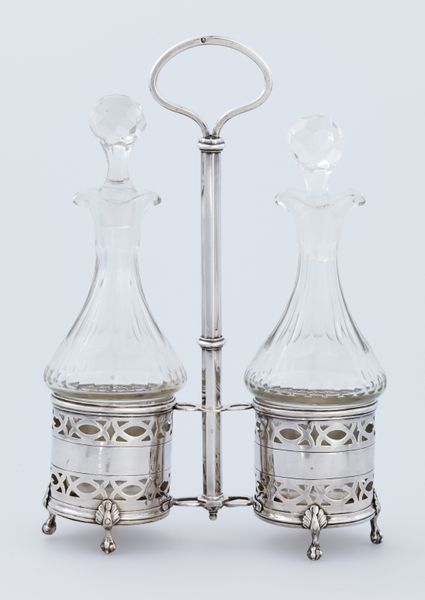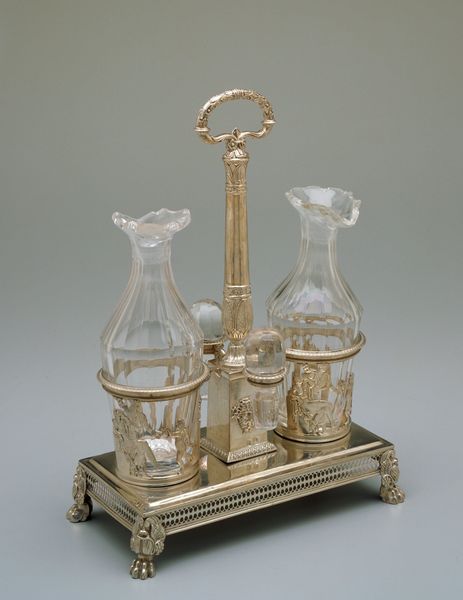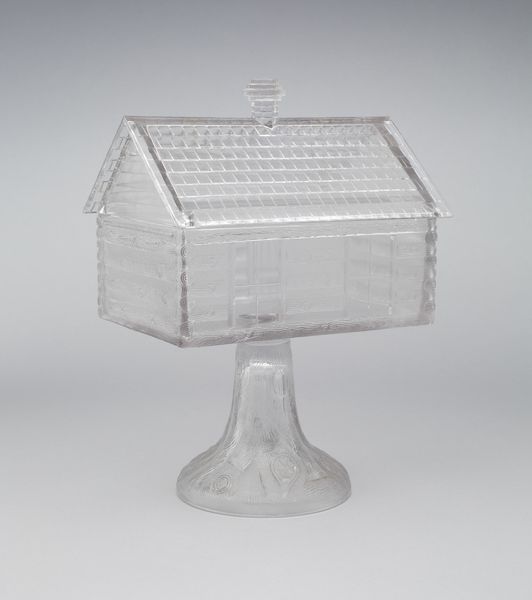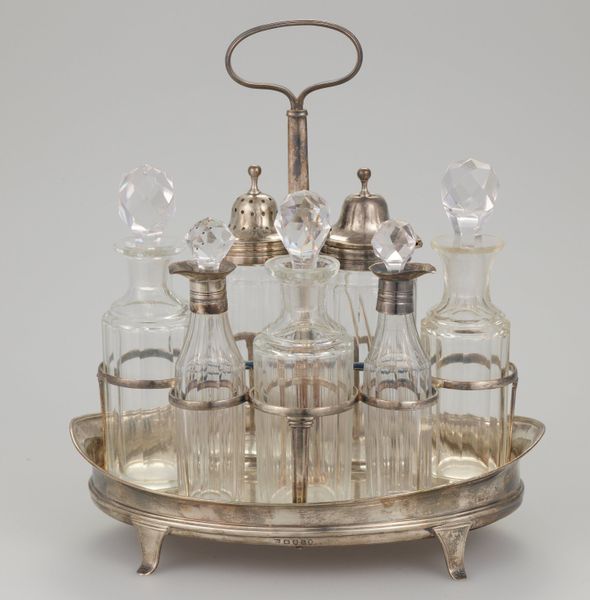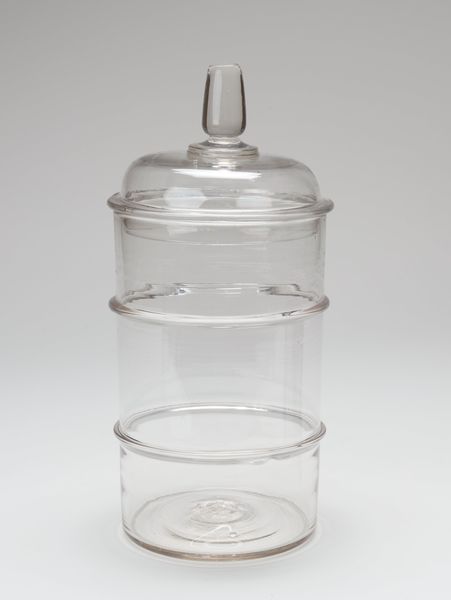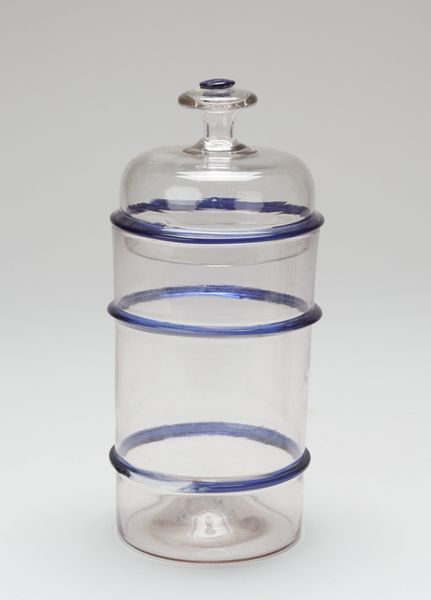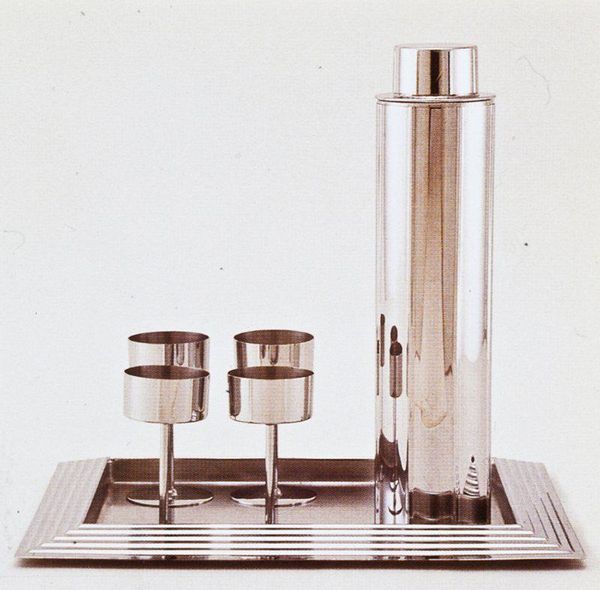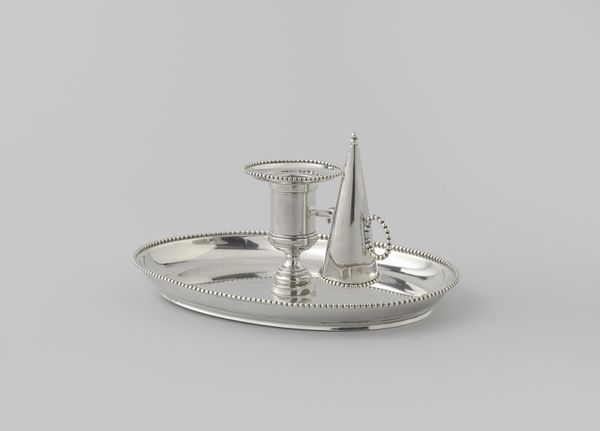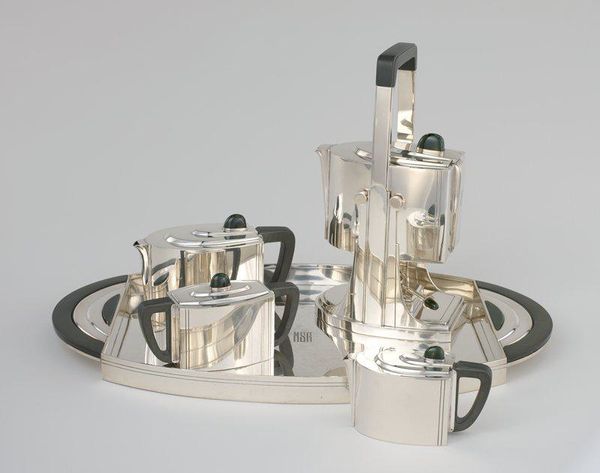
silver, glass
#
art-nouveau
#
silver
#
glass
#
decorative-art
Dimensions: Stand: Height: 17 cm (6 11/16 in.); Length: 14.7 cm (5 13/16 in.); Diameter: 6.8 cm (2 11/16 in.) Bottles: Height: 9.9 cm (3 15/16 in.); Diameter: 5.6 cm (2 3/16 in.)
Copyright: Public Domain
Editor: Here we have Koloman Moser's "Cruet Stand" from 1904-1905, crafted from silver and glass. The geometric rigidity is surprising – almost severe for an object intended for the dining table. What is your perspective on it? Curator: The stark geometry signals a distinct break from earlier, more ornamental Art Nouveau styles. Moser was a key figure in the Vienna Secession, and later the Wiener Werkstätte. This Cruet Stand isn't just a decorative object; it reflects a larger utopian ambition to fuse art and life, a push towards accessible and functional beauty for all. How do you see the implications of that accessibility? Editor: I see that, making beautiful objects for everyday use would improve people's lives. I suppose my surprise comes from the inherent class implications of silverware. Did this aesthetic unity actually challenge social hierarchies, or just create more beautiful objects for the bourgeoisie? Curator: That's a critical point. The Werkstätte, while espousing democratic ideals, catered to a wealthy clientele. Silverware itself is already exclusionary. Yet, consider this design within debates around industrialization. Artists and thinkers questioned how design could negotiate mechanized production and maintain humanistic values. So, this stand is implicated within cultural debates about class and identity. Do you think that tension adds to its significance? Editor: Absolutely, knowing the context deepens my understanding. It is more than just the silverware. It’s also about thinking of who this kind of piece serves and represents in culture, historically and now. Thank you! Curator: My pleasure! It highlights that beauty, design, and functionality can be politically charged, urging us to critically examine the values embedded in everyday objects.
Comments
No comments
Be the first to comment and join the conversation on the ultimate creative platform.

